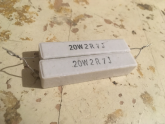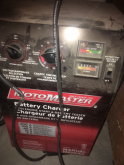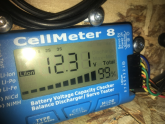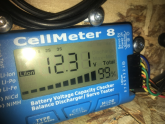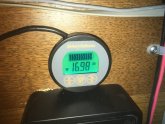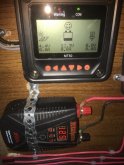Here is
an example. But shop around. You can get more ports on a single board, and some have nice displays. I'd look for one that showed the voltage of your cell if possible, and and easy way to turn on/off. If it doesn't come with a switch, you can simply add one to your connection between your quick disconnect and where you solder one end to the board. Otherwise, you'd have to disconnect the cell every time you are not using it. And the board could have an idle draw, especially if it has a display.
I don't know if these boards have any kind of LV protection for the cells. But, you could experiment if they don't say. Just never let the cell go below 2.5V. You could even test that, perhaps, with a single 18650 in case the test kills the cell. lol




